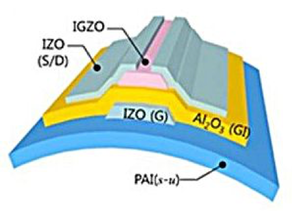Vertical Divider
|
Musing on Materials
Organic Polymers w/Low CTE Discovered February 11, 2019 Scientists led by Professor Kim Sang Youl of the Korea Advanced Institute of Science and Technology developed an organic polymer that expands minimally when heated. Most objects expand upon heating and shrink when cooled, a property that is measured by the coefficient of thermal expansion (CTE). Organic polymers have a relatively large CTE compared to ceramics or metals. However, thin, lightweight and planar substrates of semiconductor devices need a low CTE comparable to prevent cracking due to the stress from thermal expansion and contraction. Therefore, matching the CTE of the semiconductor device and the substrate is crucial for successfully manufacturing display devices. The researchers sought to control the CTE of organic polymers by varying the distance and interaction of polymer chains and demonstrated that the thermal expansion and contraction of polymer films could be minimized by introducing interaction forces between the polymer chains by arranging the direction of the force perpendicularly. |
|
The team implemented this approach by modifying the chemical structure of a transparent polymeric material, poly (amide-imide) film. They showed that their film is transparent, flexible and thermally stable enough to be used in the active-matrix organic light-emitting diode fabrication process. When the researchers developed indium gallium zinc oxide thin film transistor devices based on the newly synthesized transparent poly (amide-imide) film, they confirmed that their device could operate normally even when it was folded down to a radius of one millimeter. A film of the new polymer demonstrated sufficient thermal stability to withstand the process used to fabricate Indium-Gallium-Zinc Oxide Thin Film Transistors (IGZO TFTs), a process that exposes film to temperatures in excess of 400ºC. The schematic below illustrates the structure of a transparent and flexible IGZO TFT device fabricated on a substrate made from a specific type of poly (amide-imide) called PAI (s-u).
Figure 1: IGZO TFTs on Poly (amide-imide)
Figure 1: IGZO TFTs on Poly (amide-imide)
Source: KAIST
“Our results suggest a way of controlling the thermal expansion of amorphous polymers similar to a level of glass without chemical cross-linking, which has long been regarded as a challenging problem. At the same time, we succeeded in making the polymer transparent and flexible. We expect that it can be applied to controlling the thermal expansion of various organic materials,” said Kim. The article can be found at: Kim et al. (2018) Poly(amide-imide) Materials for Transparent and Flexible Displays.
|
Contact Us
|
Barry Young
|

